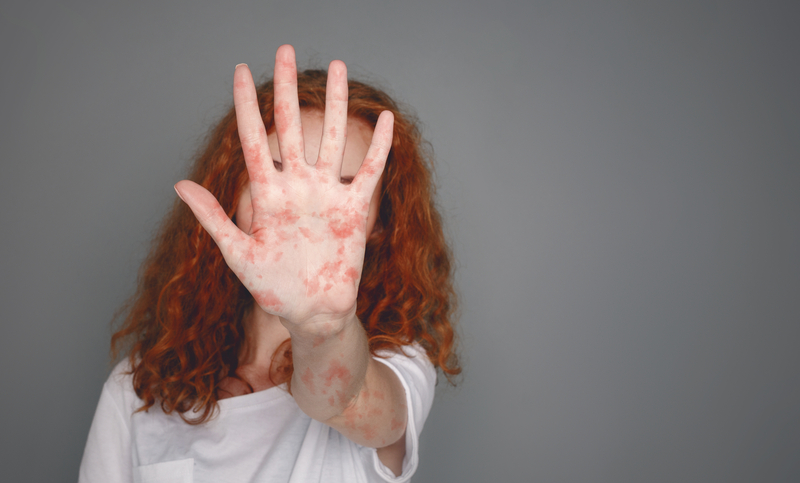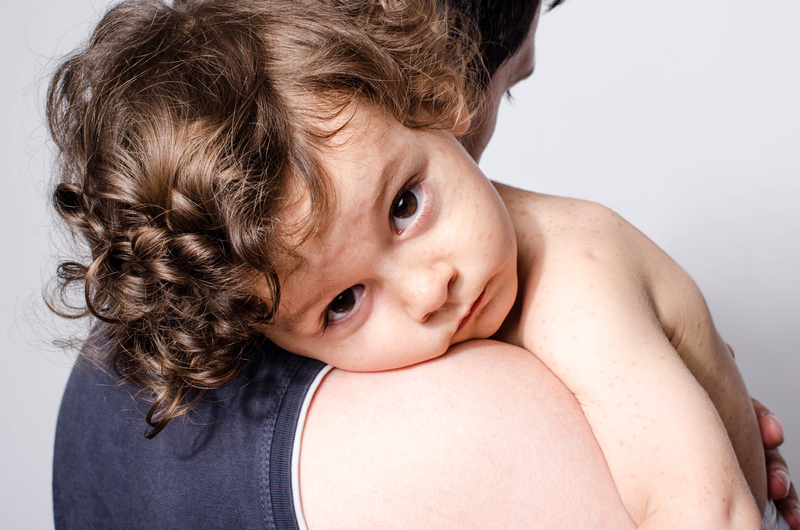
Gindrovel Dumitra is a family doctor in Sadova commune, Dolj county. He became famous after he convinced all parents in his town to vaccinate their children during the measles epidemic that broke out in 2016. The current measles outbreak, announced two days ago by the Ministry of Health, revealed that Gindrovel Dumitra did not contract measles. among his patients for the past 17 years, and all the children on the list are vaccinated. But how did Romania announce the second measles epidemic in 7 years? What lessons have we not learned from the previous epidemic that killed 64 children, most of whom were unvaccinated?
We’re trying to find answers with Dr. Hindrovel Dumitra, coordinator of the Vaccinology Group of the National Society of Family Medicine.
It will be recalled that on Tuesday evening, the Ministry of Health announced a measles epidemic at the national level, as this year, in total, almost 2,000 cases of the disease were registered in 29 countries. The previous measles epidemic in Romania was declared in September 2016 with fewer cases than the current one – 675 cases were registered in 23 counties that year – but 3 children also died from the disease.
Why did the authorities declare a measles epidemic, if 192 cases were registered in the last week of November? “Measles is the most contagious disease”
Many people wonder why the authorities declared a national measles epidemic, given that in the last week of November (the latest data centralized by the INSP), 192 cases of the disease were registered in Romania, of which 59 were in Bucharest.
The answer is simple: measles is the most contagious disease and can be practically 10-18 times more contagious than the disease COVID-19, which triggered the pandemic: “To first understand what disease we are talking about: measles is one of the most contagious infectious diseases. And here, in order to have a term of comparison and to be understood, I will mention the basal number of reproduction that we talked about during the pandemic. If we have a sick person in a community, this basal reproduction number tells us the number of people to whom that sick person transmits the disease. With COVID-19, this number was initially 2 and constantly fluctuated: 1-2-2 and something. Basically, one person who got COVID-19 got two more. Well, in the case of measles, the basal reproductive number is 16-18. This means that a sick person passes it on to another 16-18 people, who in turn get sick. This is the highest basal reproductive number,” says Dr. Hindrovel Dumitra.
In addition, based on this basal reproduction rate, the level of vaccination coverage that will ensure protection against the spread of measles is also calculated: it should be 95%, and not as an average for the country, but for each individual district, says Hindrovel Dumitra.

Dr. Hindrovel Dumitra / Photo: Inquam Photos – George Călin
In Romania, vaccination coverage with the first dose of the MMR vaccine is 78% nationally and 62% with the second dose for eligible children, and has been on a downward trend for more than 10 years, according to the ministry. Health.
“If a case occurs in communities with low vaccination coverage, it spreads immediately,” says doctor Hindrovel Dumitra.
There are 3 categories of people who have protection against the disease: those who have been vaccinated according to the full schedule, those who have already had the disease and have lifelong immunity, and children up to about 6-7 months who receive antibodies from their mother.
In view of the announcement of the measles epidemic, family doctors will now try to vaccinate children aged 9-12 months: basically, reduce the age of vaccination from 12 to 9 months, since there is an epidemic situation.
Unlike the previous epidemic in 2016, which left us with a vaccine crisis, there are now vaccine stocks in all countries.
Hindrovel Dumitra also says that since the pandemic, there have been cases of children who were not vaccinated and have not yet recovered.
MMR vaccine, highest refusal rate in Romania due to legends that it causes autism
The patients of Hindrovel Dumitra are vaccinated against measles, but the doctor knows that the PDA vaccine against measles, mumps and rubella, which is administered to children in the family doctor’s office in two doses – at the age of 12 months (the first dose) and at the age of 5-7 years (the second dose ) – continues to be the vaccine with the highest percentage of refusals in Romania, as it was during the measles epidemic 7 years ago.
“The story goes back to 1998, about the alleged link with autism. This is the vaccine that Romanian parents have the greatest reluctance towards. This is where everything comes from, although it has been proven countless times that there is no connection. But it is only about causing the slightest doubts among the population,” the doctor explains.

Kir / Photo: Prostockstudio | Dreamstime.com
Hindrovel Dumitra also says that if we look at the last few years, Romania has been experiencing a cyclical measles epidemic: “In 2005-2006 we had a measles epidemic, in 2011-2012 another one, then in 2016-2019, and now we we have an epidemic again.”
Why is this happening? “This means that the number of children left unvaccinated creates a critical mass of susceptible people, and the occurrence of a case determines at a certain point the evolution in society and the emergence of an epidemic.”
“Why are we declaring an epidemic now? It is so that we can take some measures to limit the spread. First of all, we are discussing vaccination measures and lowering the age from 12 months to 9 months to protect this very vulnerable category.”
How deceptive the symptoms of measles are: high fever appears 48 hours before the rash on the skin, at this time the child is contagious
In the case of measles, the onset of symptoms occurs approximately 10-14 days after exposure due to non-specific signs and symptoms, says Dr. Hindrovel Dumitra.
“Before the actual rash on the skin, the first sign is fever. Then a lesion appears in the mouth, inside the lip, at the level of the molar. A skin rash appears only 48 hours after the onset of fever,” the doctor explains.

Cyrus / Photo: Luanateutzi | Dreamstime.com
“As soon as a high fever appears and only after 48 times a rash appears, you, because you have a high fever, admit her to the hospital. He continues to come into contact with other children with fever and respiratory illness, and develops a rash 48 hours later. Well, during this time he transmitted the disease to all the children who were hospitalized with him. Therefore, hospitals should also prepare for an epidemic situation,” the doctor concludes.
Read also:
-
Rafila: Measles Epidemic Announcement Enables Acceleration of Vaccination Campaign / Rising measles cases pose public health challenge
- The MMR vaccine is the vaccine with the highest failure rate in Romania. The rejection rate is higher in cities than in villages
- The Ministry of Health has declared a nationwide measles epidemic
Source: Hot News
Ashley Bailey is a talented author and journalist known for her writing on trending topics. Currently working at 247 news reel, she brings readers fresh perspectives on current issues. With her well-researched and thought-provoking articles, she captures the zeitgeist and stays ahead of the latest trends. Ashley’s writing is a must-read for anyone interested in staying up-to-date with the latest developments.